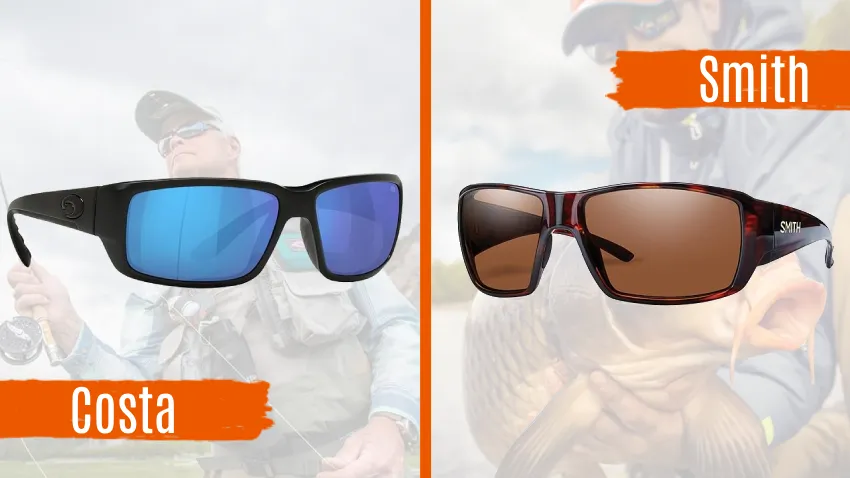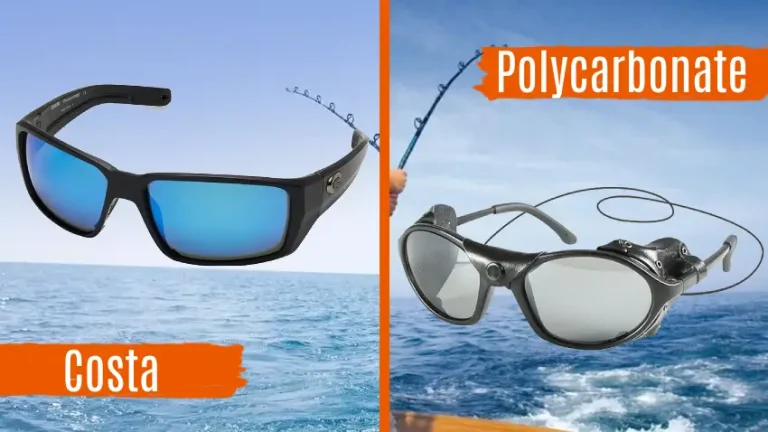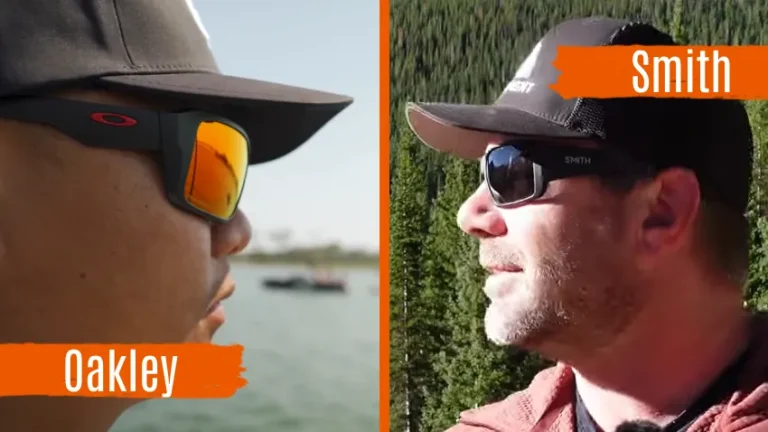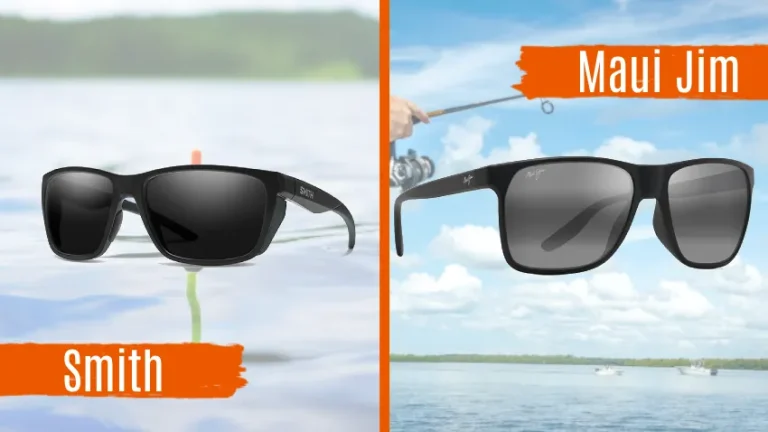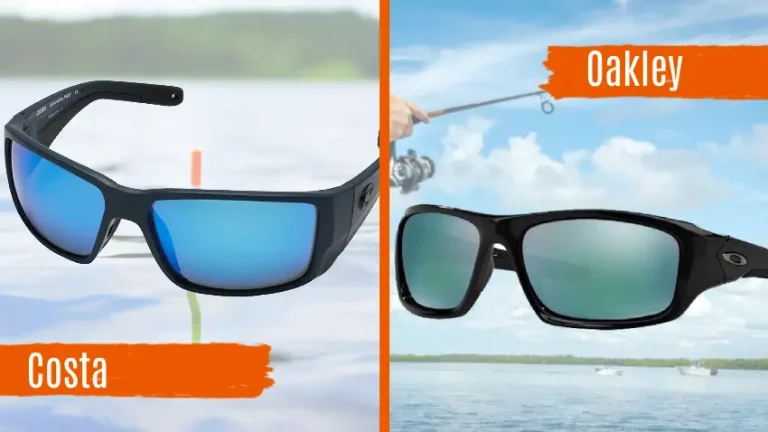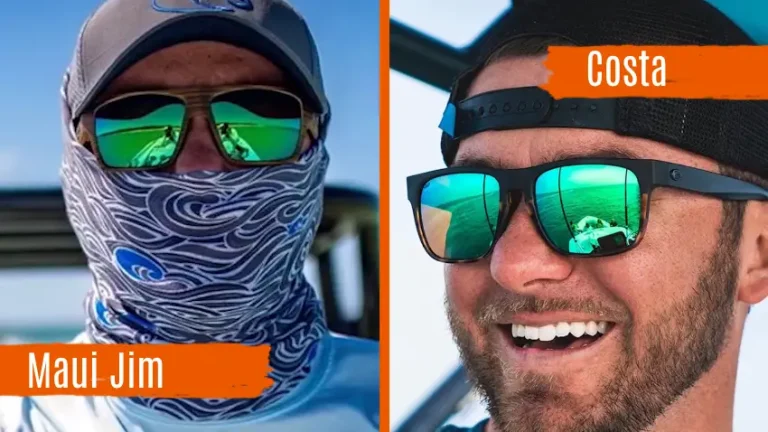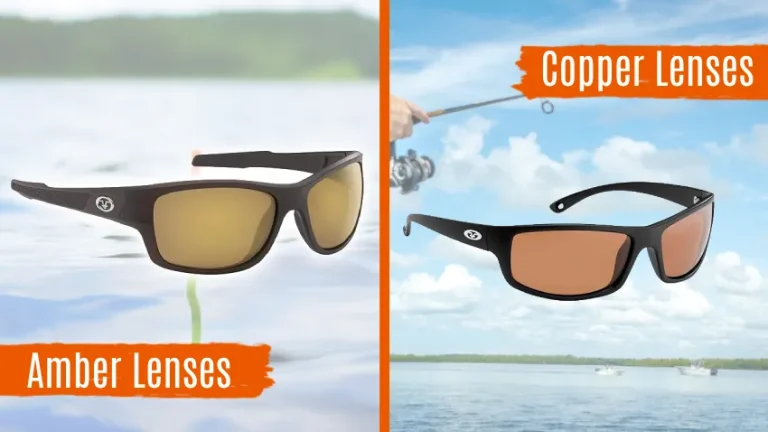Costa vs Smith Fishing Sunglasses: 5 Differences
When you head out for a day of fly fishing, one of the most essential pieces of gear you’ll need is a reliable pair of sunglasses. And, for choosing the perfect eyewear, Costa and Smith fishing sunglasses are two prominent contenders that anglers often consider.
Both Costa and Smith sunglasses offer unique features tailored to specific needs, but you should pay attention to the differences to pick the right one.
Costa sunglasses come with glass lenses that provide superior clarity and scratch resistance, making them ideal for fly fishing. On the other hand, Smith sunglasses feature polycarbonate lenses that may not be as scratch-resistant as Costa’s glass lenses.
We will examine the differences between Costa and Smith fishing sunglasses in detail so you can decide which is best for your next fishing trip.
5 Differences Between Costa and Smith Fishing Sunglasses
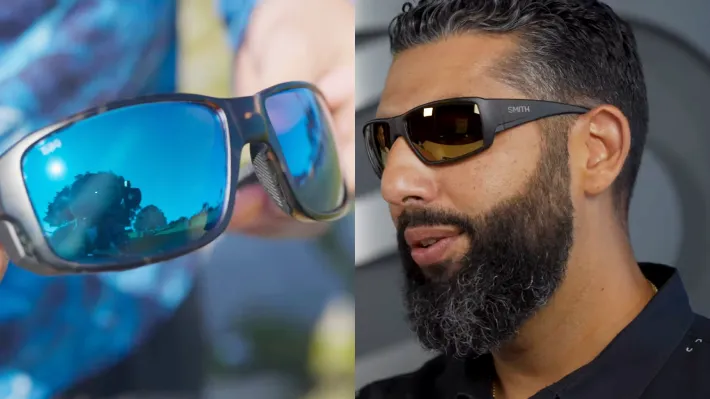
There are several key points to consider when comparing Costa and Smith fishing sunglasses.
- Lens material and scratch resistance
- Lens tint and conditions
- Weight and comfort
- Ventilation
- Price and value
Now, you can examine each difference in detail to choose the right sunglasses for your fly fishing excursion.
1. Lens Material and Scratch Resistance
To compare the lens material and scratch resistance of Costa and Smith fishing sunglasses, you’ll find a notable difference between the two brands.
Costa sunglasses are known for their 580 glass lenses, which offer superior clarity and scratch resistance. These glass lenses are highly durable and can withstand the rigors of outdoor fly fishing activities.
On the other hand, Smith sunglasses feature lenses made from lightweight polycarbonate. While polycarbonate lenses aren’t as scratch-resistant as Costa’s glass lenses, they still provide basic protection without specialized coatings.
However, it’s important to note that polycarbonate lenses are generally more prone to scratching compared to glass lenses.
2. Lens Tint and Conditions
Regarding lens tint and conditions, Costa and Smith have different approaches to catering to the needs of fly-fishing anglers. Costa Del Mar offers seven lens colors, each specifically tailored to address different lighting conditions and activities.
The lens colors range from blue mirror, green mirror, gray silver mirror, copper silver mirror, gray, and copper, to sunrise silver mirror, with each color serving a specific purpose.
For example, blue mirror lenses work best in full-sun situations on open water and offshore, while green mirror lenses enhance vision and contrast, making them perfect for fishing inshore and on flats.
Conversely, Smith uses ChromaPop technology to categorize its lens tints into Sun, Everyday, Photochromatic Rose Flash, and ChromaPop Storm categories, each aimed at different lighting conditions.
Sun tints like Sun Green Mirror, Sun Black, Sun Platinum Mirror, and Sun Red Mirror are best for bright and sunny conditions. Meanwhile, Everyday tints such as Everyday Green Mirror, Everyday Violet Mirror, and Everyday Red Mirror are suitable for a wide range of lighting conditions.
Smith also offers additional lens options catering to specific lighting conditions, including Clear, Yellow, RC36, Polarized Rose Copper, Yellow Sensor, Blue Sensor Mirror, Red Sensor Mirror, Ignitor Mirror, Platinum Mirror, Photochromatic Red Sensor, Red Sol-X Mirror, Green Sol-X Mirror, Gold Sol-X Mirror, and Blackout.
3. Weight and Comfort

Costa and Smith have different approaches to weight and comfort. The Costa sunglasses boast a lightweight design that minimizes discomfort and fatigue during long fly fishing trips. This is achieved through frameless options and durable TR90 nylon frame construction.
For example, a pair of Costa’s men’s sunglasses weighs just 16 grams. This makes them an excellent choice for fly-fishing enthusiasts who prioritize comfort and long wear.
On the other hand, Smith’s sunglasses may feel slightly heavier on the face, but still emphasize comfort. They feature a modern, shield-style design that weighs 27 grams, providing a balance between coverage and comfort.
The Smith Reverb comes with a unique PivLock™ design that allows you to switch between two interchangeable ChromaPop™ lenses, adapting to changing lighting conditions.
Ventilation
Regarding ventilation, Smith fishing sunglasses might be the more suitable choice for you. Smith Reverb performance sunglasses are designed with a shield-style frame that offers effective ventilation to reduce the risk of lens fogging, which is ideal for outdoor activities such as fly fishing.
The design of the sunglasses allows for efficient airflow, which keeps the lenses clear and provides better comfort in various conditions.
In contrast, while Costa sunglasses feature side vents on the frames to combat fog and perspiration, they may not have the same ventilation design as Smith’s shield-style sunglasses.
It is crucial to consider ventilation, especially during activities like fly fishing, where changes in temperature and humidity can impact your visibility. Therefore, Smith’s design that promotes better ventilation would be preferred for this specific aspect.
Price and Value
Costa sunglasses are often considered a significant investment due to their high price tag, but this is because of their quality, durability, and scratch-resistant glass lenses.
Prices for Costa sunglasses range from approximately $149 to $300 or more, depending on the model and lens technology. They may be expensive, but the value they provide is worth it in terms of the quality of the product and features you get.
On the other hand, Smith sunglasses are generally more affordable and provide good value for budget-conscious fly-fishing enthusiasts.
Prices for Smith sunglasses range from approximately $99 to $280, and some specialized models can be more expensive. Although they may not match the lens quality of Costa, they still offer good quality and a great overall experience for the price.
Comparison Chart of Costa and Smith Fishing Sunglasses
| Difference | Costa | Smith |
| Lens Material and Scratch Resistance | 580 glass lenses | Lightweight polycarbonate lenses |
| Lens Tint and Conditions | Seven lens colors with specific purposes | ChromaPop technology categorizes lens tints based on VLT and lighting conditions |
| Weight and Comfort | Lightweight design, 16 grams | Modern shield-style design, 27 grams with PivLock™ for interchangeable lenses |
| Ventilation | Side vents for fog and perspiration | Shield-style frame with efficient ventilation |
| Price and Value | Higher price range but offers quality, durability, and scratch resistance | More affordable, suitable for budget-conscious fly-fishing enthusiasts |
What level of UV protection do Costa and Smith’s sunglasses offer for fly fishing?
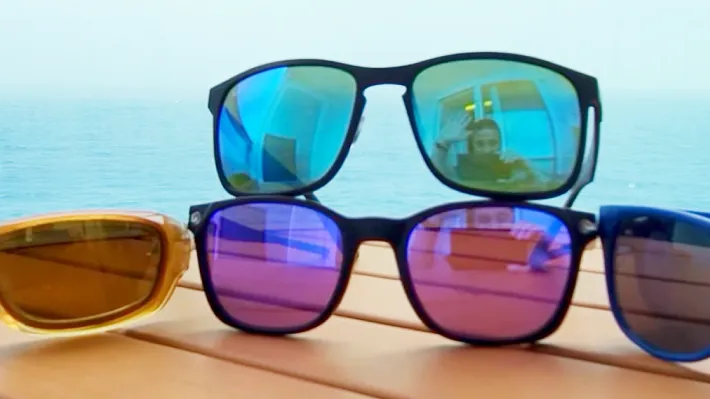
Both Costa and Smith sunglasses offer excellent UV protection for fly fishing, ensuring that your eyes are well protected from harmful UVA and UVB rays. These sunglasses are designed to block 100% of UVA and UVB rays, providing maximum protection against the sun’s damaging effects.
Whether you choose Costa or Smith, you can trust that your eyes will be shielded from UV radiation while you enjoy your time fly fishing in Maine or wherever you prefer to fish. This level of UV protection is crucial for preventing eye strain, discomfort, and potential long-term damage when fly fishing in bright, sunny conditions.
With Costa and Smith sunglasses, you can have peace of mind knowing that your eyes are being kept safe from the sun’s harmful rays, allowing you to enjoy your fly fishing experience fully.
What are the best colors of polarized glasses for fly fishing?
When choosing the best color-polarized glasses for fly fishing, you’ll want to consider the specific lighting conditions and your fishing environment.
Generally, brown lenses are a great choice for fly fishing. They offer vibrant hues, exceptional contrast, and color clarity, making them ideal for moderate-to-overcast days, early mornings, and late afternoons when the sun’s intensity varies.
If you’re into inshore fly fishing, green lenses can provide excellent contrast and detail in sunny and medium-light conditions. On the other hand, for offshore fly fishing in bright, unfiltered sunlight, blue lenses are a top choice.
Remember to consider the specific lighting conditions you’ll be fishing in and the environment you’ll be in to determine the best color for your fly fishing sunglasses.
Weighing In the Perfect Choice Between Costa and Smith Fishing Sunglasses
Both Costa and Smith offer top-quality fishing sunglasses that cater to various needs and preferences. While Costa is the go-to choice for those seeking superior lens quality and scratch resistance, Smith is ideal for those who value comfort, ventilation, and affordability.
The choice between the two brands comes down to what matters most to you and the fishing conditions in which you’ll be using them. So, whether you choose Costa or Smith, select a pair that offers excellent UV protection and enhances your vision for a successful day out on the water.

